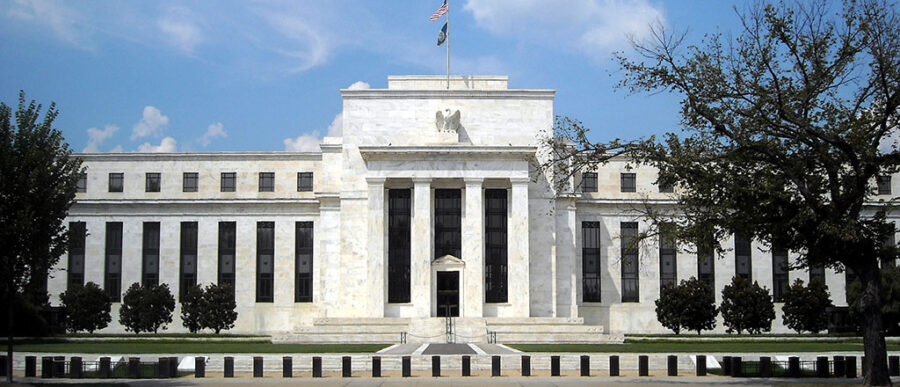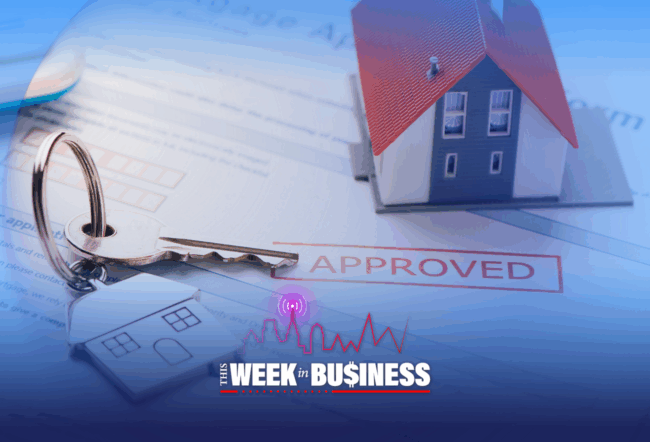Last week, the Federal Reserve decided to pivot to a wait-and-see stance on interest rates after raising them at a regular clip since December 2015. “The U.S. economy is in a good place,” Fed Chair Jerome Powell said in a Jan. 30 press conference. However, “in light of global economic and financial developments and muted inflation pressures, the [Federal Open Market] Committee will be patient as it determines what future adjustments to the target range of the Fed Funds Rate may be appropriate.”
The global developments giving the Fed pause include slowing growth in some major foreign economies, particularly China and Europe, the economic impact from Brexit, the fallout from trade wars and a possibly prolonged federal government shutdown. “The cumulative effects over the last several months warrant a patient wait-and-see approach regarding future policy changes,” he said. What traditionally has forced the Fed’s hand to raise rates was the specter of high inflation. But this risk “appears to have been diminished,” helped by lower oil prices, Powell said.
Wharton finance professor Jeremy Siegel, who recently predicted that the Fed would not raise rates in 2019, said the FOMC should have pivoted in December, when stocks had a mini-bear market. “It was then they should have decided we are not going to raise anymore,” he said recently on the “Behind the Markets” show on Wharton Business Radio, SiriusXM channel 132. “The markets said, ‘You better not [raise rates],’” and now the Fed is finally listening.
According to Siegel, the Fed sees signals that the U.S. continues to have a robust economy but with inflation fears easing a bit. He cited the January employment report from the Bureau of Labor Statistics (BLS) showing a gain of more than 300,000 non-farm jobs, which was a larger increase than expected. Meanwhile, the jobless rate, which is culled from another BLS survey, edged up to 4% from 3.9% the month before. “We like to think about unemployment rates going up as negative, and yet it gives us slack in the labor market and does not put pressure on wages, which is the thing that you’re worried about in terms of putting pressure on costs that will lead to inflation,” he said. “This is absolutely great news.”
“[That] so-called ‘recession scare’ is kind of getting out of the market.” –Jeremy Siegel
The trends are “very strong,” Siegel continued. “No signs whatsoever of recession.” The only little “wobble” in economic signals was the greater-than-expected increase in jobless claims, but it could be due to the teachers’ strike in California, he added. “But on all other data, that so-called ‘recession scare’ is kind of getting out of the market,” Siegel noted. The Fed “gave everything the market wanted — pivoted to a ‘wait and see.’” He believes the Fed largely would stand pat as they closely watch incoming economic data, with perhaps a hike at the end of 2019.
After the Fed’s announcement, the stock market is rebounding and Siegel sees more upside. Stocks are trading at a little more than 17 times 2018 earnings, or put another way, slightly above 16 times this year’s earnings. “The 16 to 17 range in a low interest rate world is not an expensive market,” he said. “I can still see people piling in.” Siegel also believes value stocks will outperform growth stocks in 2019 for the first time in a couple of years. Moreover, “I think the bottom is in for emerging markets. Technically, it’s in triple bottom. The psychology has changed — not just foreign but value stocks,” Siegel noted. A triple bottom pattern in a stock chart signals that the price is headed up.
With the change in the Fed’s stance, President Trump cannot blame Powell anymore for any stock market declines, Siegel said. In the past few months, Trump had been blaming the Fed’s rate hikes for stock prices falling. But now with the Fed on pause, “anything that goes wrong from a policy perspective is on Trump’s shoulders,” he said. “He certainly knows that if he imposes 25% tariffs and we don’t come to a reconciliation or at least another big delay to work on this, the decline in the stock market — and there would be a decline — is on him.”
Politics at Play?
Given that the Fed shifted its stance after enduring months of Trump’s accusatory tweets, was the central bank pressured by politics? “I think it’s unlikely that the [Federal Reserve] Board would take pressure from President Trump into account,” said Wharton finance professor Richard Herring in an interview with Knowledge at Wharton. And Trump’s antics might even backfire. “They may be less likely to move in the direction he advocates to avoid the appearance that the Fed is losing its independence.”
“A shift in the market’s perception of the Fed’s independence could seriously hamper the effectiveness of the monetary policy transmission mechanism.” –Krista Schwarz
Instead, “pressure from the market disruption in December may have had an influence” in the Fed’s dovish stance as it continues to watch economic data, Herring said. Powell is “simply affirming that the Fed will continue to be data dependent,” he said. “The global uncertainties — Brexit, slowing of growth in China and Europe, the prospect of deteriorating trade conditions plus the surprising lack of evidence of rising inflation — provide reasons to be more cautious about tightening.” But all that could change if the U.S. economy remains strong and inflation begins to surge. “I would expect them to resume tightening,” Herring added.
Wharton finance professor Krista Schwarz agreed. “I do not believe that the Fed is acquiescing to political pressure. A shift in the market’s perception of the Fed’s independence could seriously hamper the effectiveness of the monetary policy transmission mechanism,” she said in an interview. “The Fed’s leadership is keenly aware of this risk.”
Schwarz, who used to work at the New York Federal Reserve Bank, said the Fed’s policy objective “has not changed with regard to inflation and the labor market, but the prevailing risk environment has. That said, Powell communicated more of a wait-and-see stance rather than an explicit shift.” She noted that the Fed funds futures contracts “continue to show consensus expectation for no further rate changes through the end of the year, with little change since the FOMC meeting.”
But what’s interesting is that several of the risk factors Powell cited are tinged with politics: Brexit, trade wars and the government shutdown, said Peter Conti-Brown, Wharton professor of legal studies and business ethics who wrote the book, The Power and Independence of the Federal Reserve, on the Knowledge at Wharton radio show on SiriusXM. (Listen to the podcast at the top of this page.) The Fed is not just taking into account broader financial trends such as secular stagnation, durability of the Phillips Curve (that links rising wages to unemployment), he said. “It’s actually pretty reassuring that the FOMC generally is trying to go slow and understand the change in the world as it changes before them.”
Taking a wait-and-see approach is “the wisest way,” added Rodney Ramcharan, associate professor of finance and business economics at the University of Southern California who was the first chief of the Systemic Financial Institutions and Markets Section at the Board Governors of the Federal Reserve System. He joined Conti-Brown on the radio show.
“It’s actually pretty reassuring that the FOMC generally is trying to go slow and understand the change in the world as it changes before them.” –Peter Conti-Brown
“The fact that inflation sort of stays below the 2% [target] threshold means that the Fed has the luxury … to wait out the uncertainty because there’s no reason to necessarily jump in and act at this point,” Ramcharan said. But if “uncertainty continues to persist, the Fed may have a lot less room to wait. It may have to act to forestall a rise in inflation rates [above the target] if that takes place.”
However the history of the Fed shows that it is not always above politics. Ramcharan pointed to the early 1970s when the Fed Chair was Arthur Burns, an appointee of President Nixon. Burns caved to political pressure and followed an expansionary policy of lowering interest rates despite fears of inflation. What followed was a period of high, even double-digit, inflation in the U.S.
“We knew the White House was putting a lot of pressure on the Fed to not raise rates and that led to a lot of inflation,” Ramcharan said. “That’s a theme that we’ve seen throughout the world — when central banks are not independent, when central banks cannot act in a manner that is consistent with their objectives alone and not the politics, things tend to go badly.”
Starting in the late 1970s, in the U.S. and across the globe, “central banks and governments recognized that we need to act to make central banks as independent as possible,” Ramcharan said. He credited President Jimmy Carter’s appointment of Paul Volcker as Fed chairman to be a key moment. Volcker “acted independently, [even] against the interest of Carter, [by raising rates] to get the inflation rate down.” Since then, “that’s the precedent that we have [had],” he said. “You put the right person in power and let them act in accordance with the objectives of the institution and we all, as a society, get the best outcomes.”



